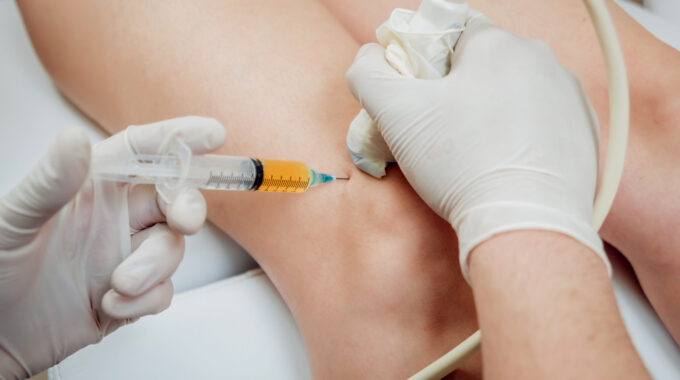Whether you're well into your training plan or just starting out, you've likely considered incorporating…

To roller or not to roller, that is the Question!
Reform Physio Foam Roll Quadriceps
Reform Physio Foam Roll Hamstrings
Reform Physio Foam Roll Calf
What does foam rolling do?
Foam rolling is a form of self massage which helps to alleviate tightness or tension within muscles. There are many proposed benefits of foam rolling on the body, such as:
• It relaxes the nervous system
• It breaks up ‘knots’ and adhesions
• Improves joint range of motion without affecting muscle performance
Possible Effects on the Nervous System
The pressure exerted by a roller causes an activation of nerves and fibres in muscles that help to regulate the nervous system, which may influence myofascial tone (Behm and Wilke, 2019.) It has also been suggested that these nerves may be associated with quick changes in heart rate and blood pressure. As a result, slow, sustained pressure during rolling may increase the relaxation response of the nervous system. However, the opposite may also be true, whereby rapid and vigorous rolling causes an increased excitatory response (Schleip, 2003.)
Other studies have found that foam rolling one area can cause effects across the whole body. For example, in Cheatham et al.’s study, participants who rolled their left leg, experienced increased range of motion and decreased pain in both legs (Cheatham et al., 2018.) This suggests that the nervous system must be impacted in some way, by rolling.
Breathing could also have an effect on the nervous system when rolling. Diaphragmatic breathing can engage the parasympathetic (relaxation) nervous system. Studies have found that slow, deep breathing whilst stretching reduces tension, pain and increases flexibility (Wongwilairat et al., 2018). Therefore, it would make sense that practicing slow, deep breathing whilst rolling may increase the overall effectiveness.
Foam Rolling Breaks up ‘Knots’ and Adhesions ???
I wish I could write a big paragraph here which was backed by a lot of lovely research……. but I cant unfortunately. Therapists have been using myofascial stiffness as an explanation for pain and stiffness for as long as we have been around, but there isnt a particularly large body of evidence supporting some of these claims.
The proposed theory is that postural and emotional stress can cause the muscles, fascia and other tissues to be unable to move as they should.
Over time, rolling may be able to reduce or eliminate these additional fibres (‘knots’ or adhesions.)
Improves Joint Range of Motion without affecting Muscle Performance
Research suggests that foam rolling may offer short term benefits for increasing joint range of motion at the hip, knee and ankle without affecting muscle performance. For example, using a foam roller for 30 seconds to 1 minute over 2-5 sessions, may increase joint flexibility due to its short-term benefits. These range of motion changes may be due to the altered viscoelastic properties of the fascia and increases in muscle temperature and blood flow.
It is also suggested that short bouts of foam rolling (once for 30 seconds) to the leg before activity does not enhance or negatively affect muscle performance (Cheatham, Kolber, Cain and Lee, 2015).
To be honest, the exact theory behind why rollering works doesn’t really matter, as long as you get benefit from it. I have been recommending rollering for years and have seen the fantastic benefits for injury management, so I will continue to recommend it!
For more info on any of the above (or anything else anatomical for that matter) give us a call or email us: info@reformphysio.co.uk
Or book online to see us in person if you are suffering and rollering isn’t helping
References
Cheatham, S., Kolber, M., Cain, M. and Lee, M., 2015. THE EFFECTS OF SELF‐MYOFASCIAL RELEASE USING A FOAM ROLL OR ROLLER MASSAGER ON JOINT RANGE OF MOTION, MUSCLE RECOVERY, AND PERFORMANCE: A SYSTEMATIC REVIEW. International Journal of Sports Physical Therapy, 10(6), pp.827-838.
Behm, D.G., & Wilke. J. (2019). Do self-myofascial release devices release myofascial? Rolling mechanisms: A narrative review. Sports Medicine.
Cheatham, S.W., & Stull, K.R. (2018). Comparison of three different density type foam rollers on knee range of motion and pressure pain threshold: A randomized controlled trial. International Journal of Sports Physical Therapy, 13(3), 474-482.
Schleip, R. (2003). Fascial plasticity – A new neurobiological explanation. Journal of Bodywork and Movement Therapies, 7(1), 11-19.
Wongwilairat, K., Buranruk, O., Eungpinichpong, W., Puntumetakul, R., & Kantharadussadee-Triamchaisri, S. (2018). Muscle stretching with deep and slow breathing patterns: A pilot study for therapeutic development. Journal of Complementary Integrated Medicine, 16(2).
Stull, K., 2022. What Do Foam Rollers Do?. [online] Blog.nasm.org. Available at: https://blog.nasm.org/foam-rolling-smr/what-do-foam-rollers-do




This Post Has 0 Comments